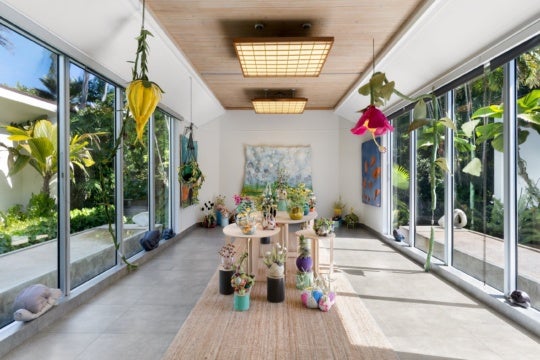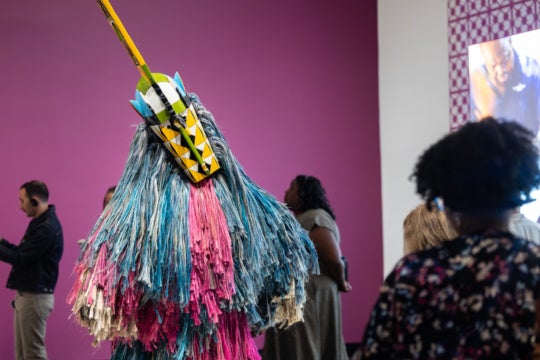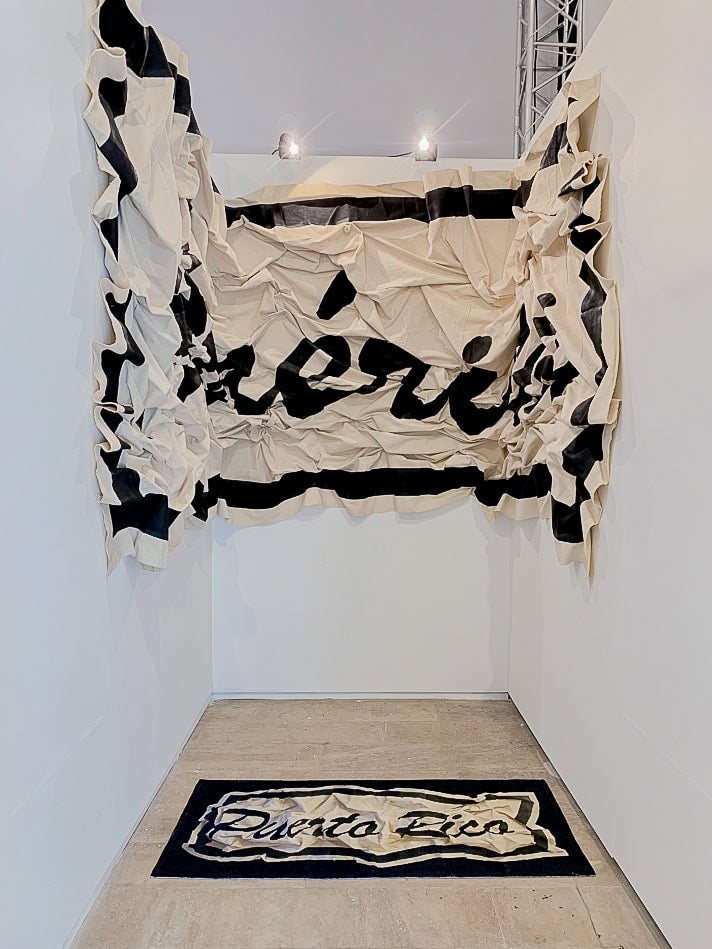
During my travels to Santo Domingo, for the MECA art fair in the capital of the Dominican Republic, I became acquainted with two versions of Quintín Rivera Toro’s practice. First is the highly decorated and educated academic representation of an artist administrator. The other is the Puerto Rican artist’s performance persona—the Muted Human. Working as both Rivera-Toro and the Muted Human, they investigate the voice of colonial Caribbean human experience, at the intersection of historical landscapes and creative practice.
In their revolutionary performance, América, shared during one of the only Caribbean-based fairs (this year hosted at La Casa De Los Vitrales) I became acquainted with the Muted Human. The Muted Human began their performance within an installation featuring large-scale paintings as sculptures, mimicking guerilla marketing didactics with phrases in Arabic, and phrases reading “Puerto Rico”, and “Revolución”.
It was through this performance that I became very aware of how this ambiguous represented figure provided social commentary through activating sites in the diaspora. As someone who also considers herself a critic of the human experience, I had the pleasure of engaging the Muted Human in conversation about what their figurative movement and social practice represent when identity is absent.
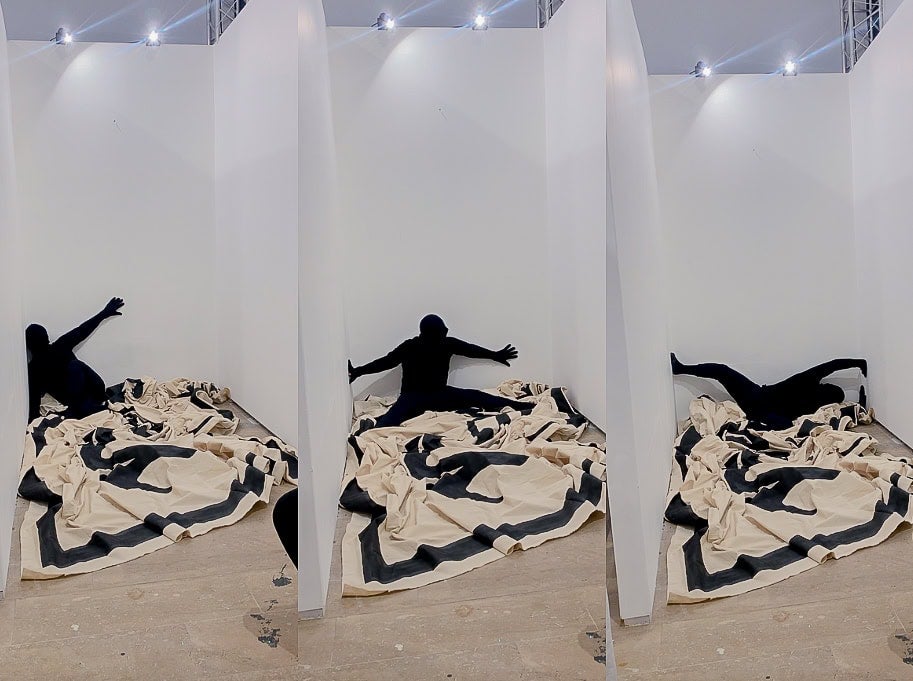
Yashira Davalos: In what ways does your performance work represent the notion of home, existing between the idea of statehood versus independent nationalism for Puerto Ricans?
The Muted Human: Well, I believe as a Puerto Rican person, that colonial relations are currently in an inescapable state. In many ways some of these paintings are more illustrative of concerns with nationalism to oppose current colonialism. In many ways the muted people’s androgynous bodies often contend with these muted Puerto Rico paintings that objectively reflect the muted colonialism of this stateless nation. Interacting with these words is meant to manifest a universality.
YD: During the MECA International Art Fair in Zona Colonial, Santo Domingo, Dominican Republic you performed the piece titled América. Could you speak to the significance of diasporic connectivity in performing at Casa De Los Vitrales?
MH: When I have conversations from the perspective of a republic refusing dictators and colonizers who are unfair, there is deep admiration I have for the Dominican Republic, for their continued fight for the well-being of their republic. Casa Vitrales is a masterpiece of Antonin Nicadema, whose design focus in the Caribbean was the modernization of colonial architecture. There’s an architectural vernacular that bonds us in the Caribbean despite the bureaucracies of our landscape. As an androgynous figure, my performance physically engages the architecture in a miming movement continuum as a way to resolve the discourses of the artwork from their respective parts of the Américas.
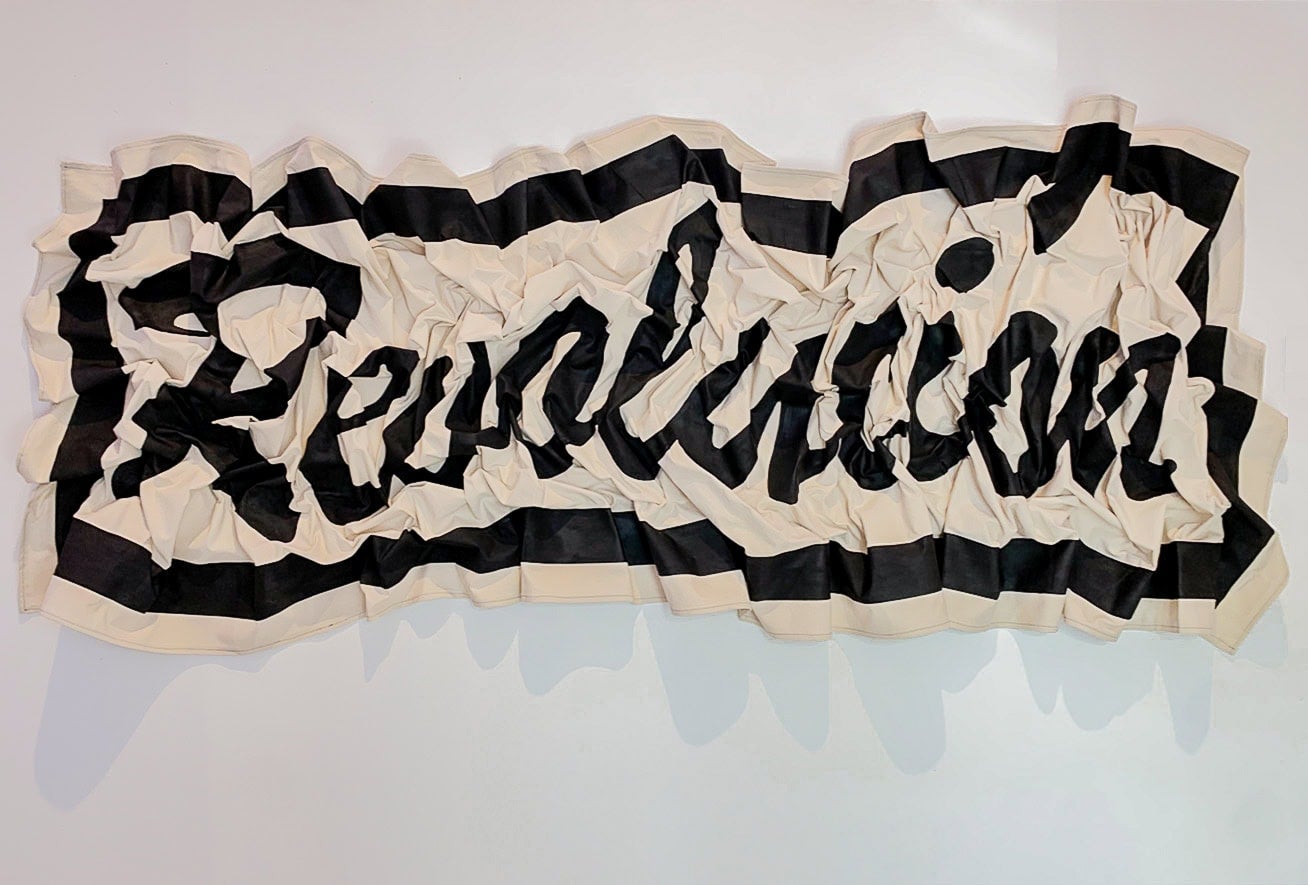
YD: After your performance on opening night, the text-based works within the booth were continuously rotated, ending with “revolución”. This work seems to tie into a legacy of artists employing strategic use of literary semantics in visual art. Could you speak to the ongoing performance of the works in a dialogue after your departure in this context?
MH: Semantics, linguistics, and all other imaginations of language… thinking about the possibilities of language are at the heart of these paintings. To change the works in the format of a three-day fair, all the transient activity in the space is a funny format. It allows word of mouth about the fair, and the words themselves, to become interchangeable. The site becomes a playground for these carefully chosen words that arrive in some sort of universal concern, engaging with human values. Ending with revolución, we wanted to bow down to the Dominican Republic for the cultural evolution, opening art to greater landscapes, despite efforts to incapacitate the voice of their people. I’m still considering responding to so many of Quintín’s works that say, rio y mar, paz y guerra…these polarizing words. This is a time to communicate clearly. This is also a time to communicate poetically. There are times when we must be loud, as a call to action. Perhaps being loud can also be done in silence.

